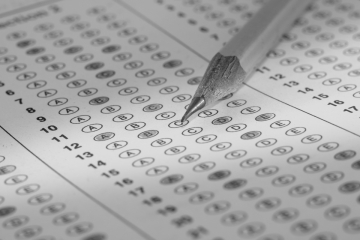The National Center for Education Statistics released the fourth study in a series designed to evaluate high school students’ transition to postsecondary education. The primary focus of the report is a nationally representative sample of roughly fifteen thousand students whom researchers surveyed three times: in 2002, when the students were high school sophomores; in 2006, two years after graduation; and again in 2012, eight years after graduation. Researchers also obtained high school transcripts and, if applicable, at least one postsecondary transcript for every member of the cohort, and disaggregated the data by a variety of factors, including demographics, parent education level, and the number of remedial undergraduate courses taken.
The most compelling findings reconfirmed the stark but all-too-familiar achievement gap. If a student was white or Asian, grew up in a two-parent home, had educated parents, or belonged to one of the top three socioeconomic quartiles, that student was more likely than their less advantaged peers to enroll in a postsecondary program of some kind, more likely to earn better grades, less likely to require remedial classes, more likely to graduate, and more likely to earn a bachelor’s or master’s degree instead of an associate’s degree or undergraduate credential.
More generally, the researchers found that 84 percent of the 2002 high school sophomores surveyed enrolled in some sort of postsecondary institution within eight years of graduating high school. Forty-one percent of those who did engage in postsecondary education attended a four-year institution only; 28 percent only attended a two-year school; 13 percent moved from a two-year school to a four-year school; and 12 percent switched from a four-year to a two-year school. Unfortunately, over 42 percent of those who enrolled in postsecondary education failed to earn a degree or certificate of any kind—and again, those students were disproportionately disadvantaged. (No doubt the fact that only 40 percent of U.S. high school students graduate ready for college is an important factor.)
There was a time when policymakers worried about a “college aspiration gap”—that too many kids weren’t gunning for postsecondary education. No longer. These new data indicate that virtually all kids who graduate from high school give college a shot, either right away or in their twenties. But the fact that so many young people leave college without a credential indicates to us that the “college readiness gap” is now a much more pressing challenge.
SOURCE: Erich Lauff, Steven J. Ingels, and Elise Christopher, “Education Longitudinal Study of 2002 (ELS:2002): A First Look at the Postsecondary Transcripts of 2002 High School Sophomores,” U.S. Department of Education, Institute of Education Science, National Center for Education Statistics (April 2015).



